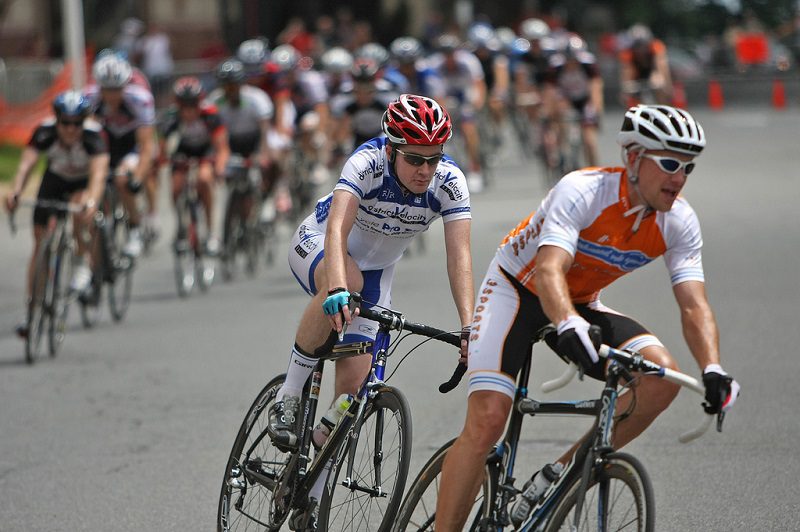Seize control of cramps: Don’t let involuntary muscle contractions shorten your ride or end your race
Surprisingly, the exact mechanism that causes cramping in the human body is not fully understood, but it appears certain people are predisposed to cramping. In the cycling world, there are some triggers associated with involuntary muscle contraction.

by Tara Norton

What is a cramp? It’s essentially an involuntary muscle contraction. Getting a cramp while racing can be painful enough to take you out of your race. I am a professional Ironman triathlete and multi-sport coach, and of the three triathlon disciplines, cycling is my true passion. At the beginning of my triathlon career, I suffered significantly from debilitating cramping that made me think my muscles were being ripped off my bones. This feeling did not bode well for solid race results.
Surprisingly, the exact mechanism that causes cramping in the human body is not fully understood, but it appears certain people are predisposed to cramping. In the cycling world, there are some triggers associated with involuntary muscle contraction.
Lack of conditioning and overexertion can be one cramping trigger. It is important to train for an event properly so your body can handle the intensity. Do some interval training as well as race simulation, and make sure to include strength and flexibility sessions in your training program. Stretching daily will keep your muscles long and loose. Before the big race or gran fondo, make sure you’re well rested.
If you haven’t been properly fit on your bike, your body’s muscular system could be subject to additional stresses due to biomechanical issues. These stresses, in turn, can bring on cramping. A proper bike fit will ensure your biomechanics are good.
Dehydration and over-hydration both cause electrolyte imbalances that can result in cramping. Consuming salty foods prior to big events or training sessions will help address this imbalance. Other electrolyte supplementation, such as taking a magnesium supplement or eating bananas for potassium, may help.
Another way to keep cramps at bay is with stretches, especially when cramping starts to happen. If you feel the telltale tightening of a cramp, stretch the cramping muscle and contract the antagonist or opposite muscle to the one cramping. Try spinning in an easier gear or pedalling backwards. You can also change positions on the bike: if you are in the saddle, stand up to switch the muscles being used.
“You can also change positions on the bike: if you are in the saddle, stand up to switch the muscles being used.”
I went beyond the norm to address my severe cramping issues. I first underwent a sweat test at the University of Guelph. I learned that I am both a high-volume and a high-concentration sweater. During my test, I did an hour training session on the bike at 70 per cent of my VO2 Max. I lost 1.6 l of sweat and had a sodium loss rate of 2.8 g/h – the equivalent of 7 g or 2 teaspoons of table salt. During my races, I had been ingesting less than half of what I was sweating out. After this test, I started to intake as close to 2 g of sodium per hour as I could, and my cramping subsided.
The other work I did to prevent cramping was with my mental coach. I learned a technique to prevent cramps from progressing past that initial inkling of the impending cramp. By recognizing a cramp was imminent and then not focusing on that concern, but instead concentrating on something else entirely, I essentially learned to not give the cramp any energy. If you think something will hurt, it will. If you think you are going to cramp, guess what? You will. It is natural for us to focus on the issue that we fear is going to affect our races negatively. When you first feel a cramp coming on, you focus on it with thoughts such as, “Oh, my calf. This could ruin my race.” Later, it’s “Don’t cramp, don’t cramp.” When I simply acknowledged the cramp and then switch my thoughts to something positive instead, the cramp that would have previously taken me out of a race no longer had the power to do so. Give it a shot as one of the few strategies for cramp-free riding.
